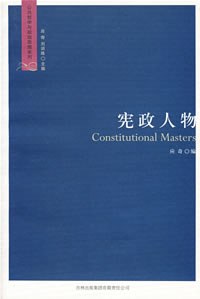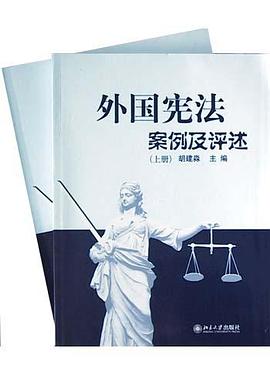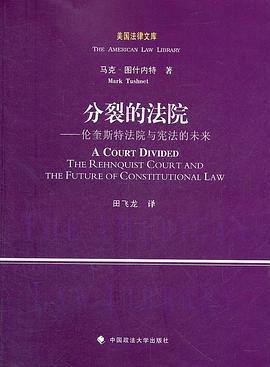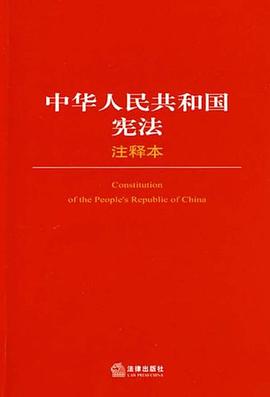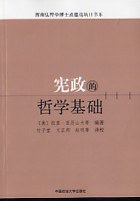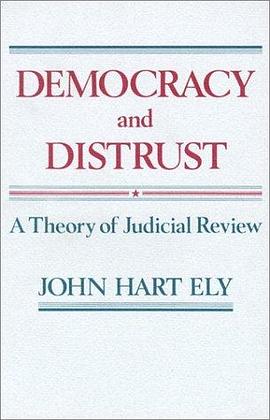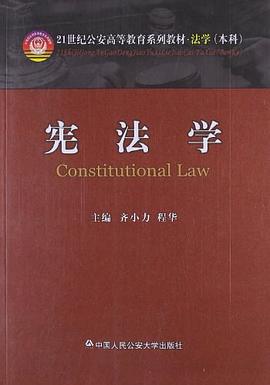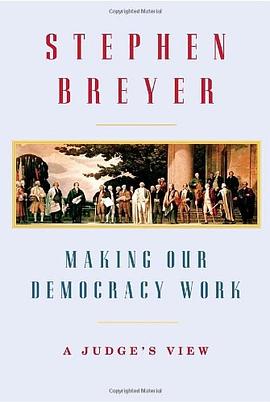

具体描述
The Supreme Court is one of the most extraordinary institutions in our system of government. Charged with the responsibility of interpreting the Constitution, the nine unelected justices of the Court have the awesome power to strike down laws enacted by our elected representatives. Why does the public accept the Court’s decisions as legitimate and follow them, even when those decisions are highly unpopular? What must the Court do to maintain the public’s faith? How can the Court help make our democracy work? These are the questions that Justice Stephen Breyer tackles in this groundbreaking book.
Today we assume that when the Court rules, the public will obey. But Breyer declares that we cannot take the public’s confidence in the Court for granted. He reminds us that at various moments in our history, the Court’s decisions were disobeyed or ignored. And through investigations of past cases, concerning the Cherokee Indians, slavery, and Brown v. Board of Education, he brilliantly captures the steps—and the missteps—the Court took on the road to establishing its legitimacy as the guardian of the Constitution.
Justice Breyer discusses what the Court must do going forward to maintain that public confidence and argues for interpreting the Constitution in a way that works in practice. He forcefully rejects competing approaches that look exclusively to the Constitution’s text or to the eighteenth-century views of the framers. Instead, he advocates a pragmatic approach that applies unchanging constitutional values to ever-changing circumstances—an approach that will best demonstrate to the public that the Constitution continues to serve us well. The Court, he believes, must also respect the roles that other actors—such as the president, Congress, administrative agencies, and the states—play in our democracy, and he emphasizes the Court’s obligation to build cooperative relationships with them.
Finally, Justice Breyer examines the Court’s recent decisions concerning the detainees held at Guantánamo Bay, contrasting these decisions with rulings concerning the internment of Japanese-Americans during World War II. He uses these cases to show how the Court can promote workable government by respecting the roles of other constitutional actors without compromising constitutional principles.
Making Our Democracy Work is a tour de force of history and philosophy, offering an original approach to interpreting the Constitution that judges, lawyers, and scholars will look to for many years to come. And it further establishes Justice Breyer as one of the Court’s greatest intellectuals and a leading legal voice of our time.
作者简介
Stephen Gerald Breyer (pronounced /ˈbraɪər/; born August 15, 1938) is an Associate Justice of the U.S. Supreme Court. Appointed by Democratic President Bill Clinton in 1994, and known for his pragmatic approach to constitutional law, Breyer is generally associated with the more liberal side of the Court.[1]
Following a clerkship with Supreme Court Associate Justice Arthur Goldberg in 1964, Breyer became well-known as a law professor and lecturer at Harvard Law School starting in 1967. There he specialized in the area of administrative law, writing a number of influential text books that remain in use today. He held other prominent positions before being nominated for the Supreme Court, including special assistant to the United States Assistant Attorney General for Antitrust, and assistant special prosecutor on the Watergate Special Prosecution Force in 1973.
In his 2005 book Active Liberty, Breyer made his first attempt to systematically lay out his views on legal theory, arguing that the judiciary should seek to resolve issues to encourage popular participation in governmental decisions.
目录信息
One Judicial Review: The Democratic Anomaly 3
Two Establishing Judicial Review: Marbury v. Madison 12
Three The Cherokees 22
Four Dred Scott 32
Five Little Rock 49
Six A Present-Example 68
ii / Decisions That Work 73
Seven Basic Approach 75
Eight Congress, Statutes, and Purposes 88
Nine The Executive Branch,Administrative Action,and Comparative Expertise 106
Ten The States and Federalism: Decentralization and Subsidiarity 121
Eleven Other Federal Courts: Specialization 137
Twelve Past Court Decisions: Stability 149
part iii / Protecting Individuals 157
Thirteen Individual Liberty: Permanent Values and Proportionality 159
Fourteen The President, National Security, and Accountability:
Korematsu 172
Fifteen Presidential Power: Guantánamo and Accountability 194
Conclusion Appendix A Images 221
Appendix B Background: The Court 228
Acknowledgments 233
Notes 235
Index 255
Contents
· · · · · · (收起)
读后感
在没看这本书以前,我脑海中的美国最高法院在司法方面有着绝对的话语权,单纯的羡慕着他们的司法独立,殊不知和其他事物的发展一样,最高法院为了真正实现司法独立也摔过跤、走错过路,直至今天还是依然前行着。 作者对于通过案例来展示最高法院在美国权威的树立过程,以及...
评分在《法官能为民主做什么》一书开头不久,作者斯蒂芬·布雷耶大法官提到他所经历的一个细节:一位非洲大法官困惑而羡慕地问他,“为什么法院说什么,美国人都会照办?”这个貌似天真的问题问得实在深刻,问出了很多国家——尤其是法治不健全的第三世界国家——民众的...
评分这本书合着任东来的《美国宪政历程:影响美国的25个司法大案》一起看,收益颇丰,给我印象最深的,美国宪法保护少数人的权利,保护言论自由,不是空炮,而是实实在在发生的。 这本书由实际的案例出发,穿插着法官判案的原则与最高法院遵循的原则,解释了美国人民为何会执行最高...
评分图书馆借到这本介绍美国最高法院的书,背景知识储备有限,读起来并不简单但好在并没有想像的那么枯燥。第二章看了好多遍才基本弄清Marbury 与 Madison 的一纸任命书之争,觉得挺有意思与各位分享(理解得不到位的地方请圈中大佬们指正)。 19世纪初,Adams 总统卸任前任命Marbur...
评分“通过保护少数群体的权利免受多数人侵扰,最高法院将‘成为支撑和维系美国民主的主要机构’。” ——Gordon Wood 本书作者斯蒂芬·布雷耶在书中提出过一个普遍存在的疑问:一群并不受民选控制、由总统直接任命、任期为终身制的的大法官们,获得了宪法的最终解释权,难道不是...
用户评价
宪法书看多了一个样……
评分布雷耶大法官关于司法与民主关系的最新力作
评分明晚要在Rossabi的课上present一个有关联邦高法的opinion paper。先拿布雷耶挡一下~~
评分权威 老生长谈 主流思想
评分布雷耶大法官关于司法与民主关系的最新力作
相关图书
本站所有内容均为互联网搜索引擎提供的公开搜索信息,本站不存储任何数据与内容,任何内容与数据均与本站无关,如有需要请联系相关搜索引擎包括但不限于百度,google,bing,sogou 等
© 2026 book.wenda123.org All Rights Reserved. 图书目录大全 版权所有











